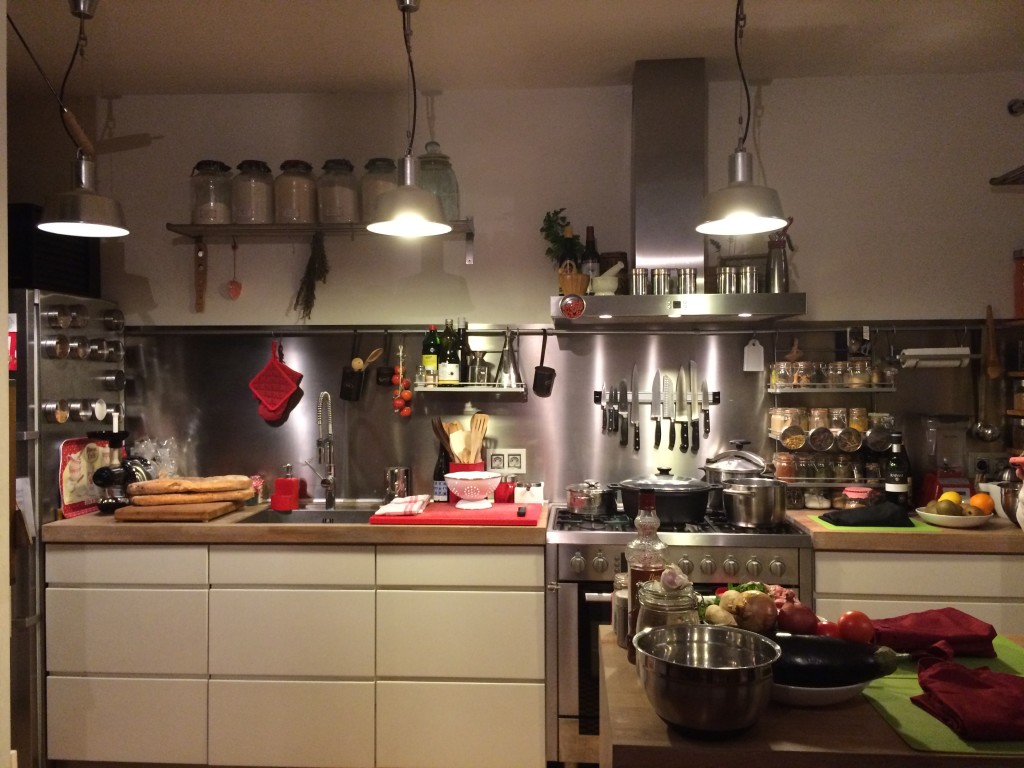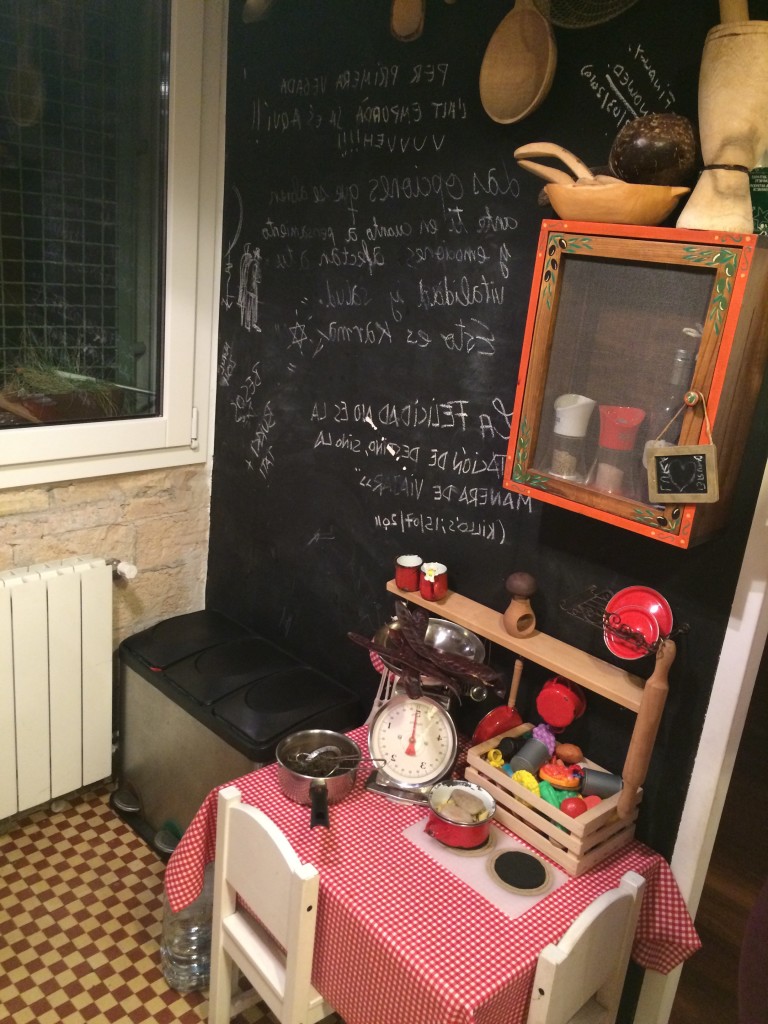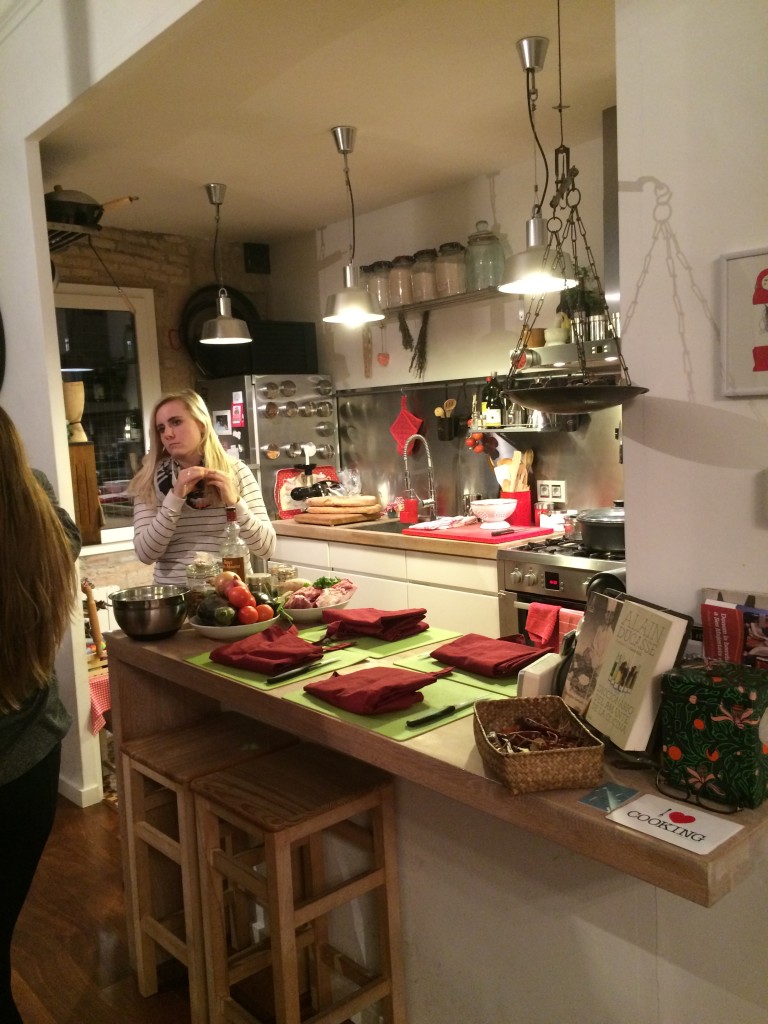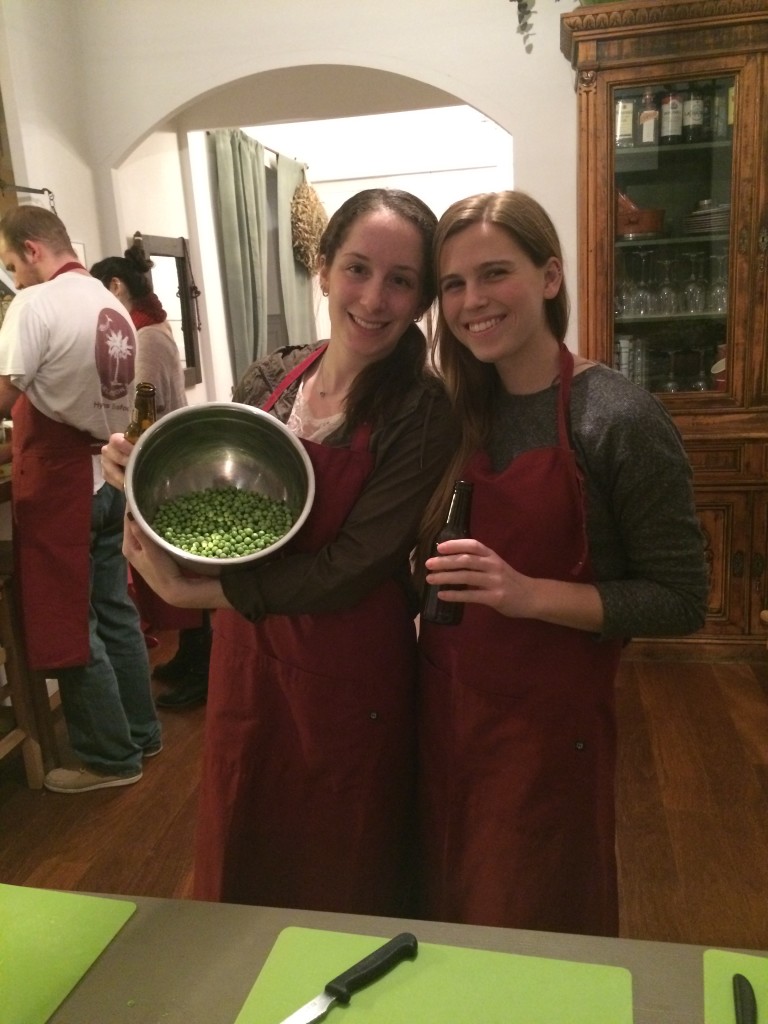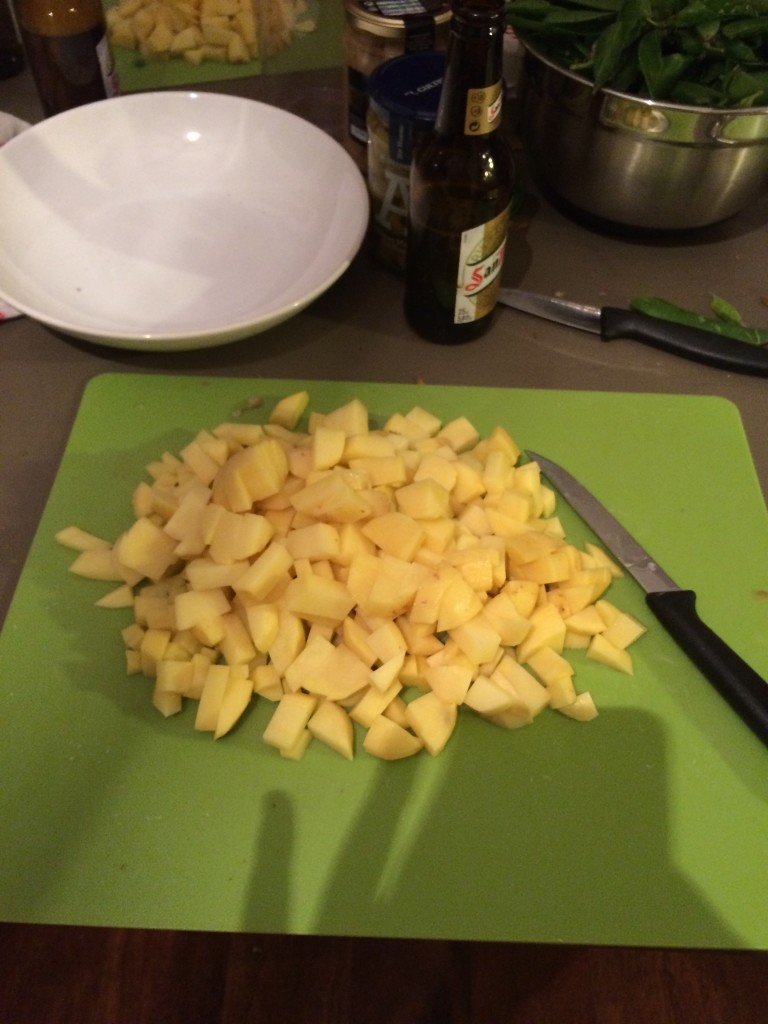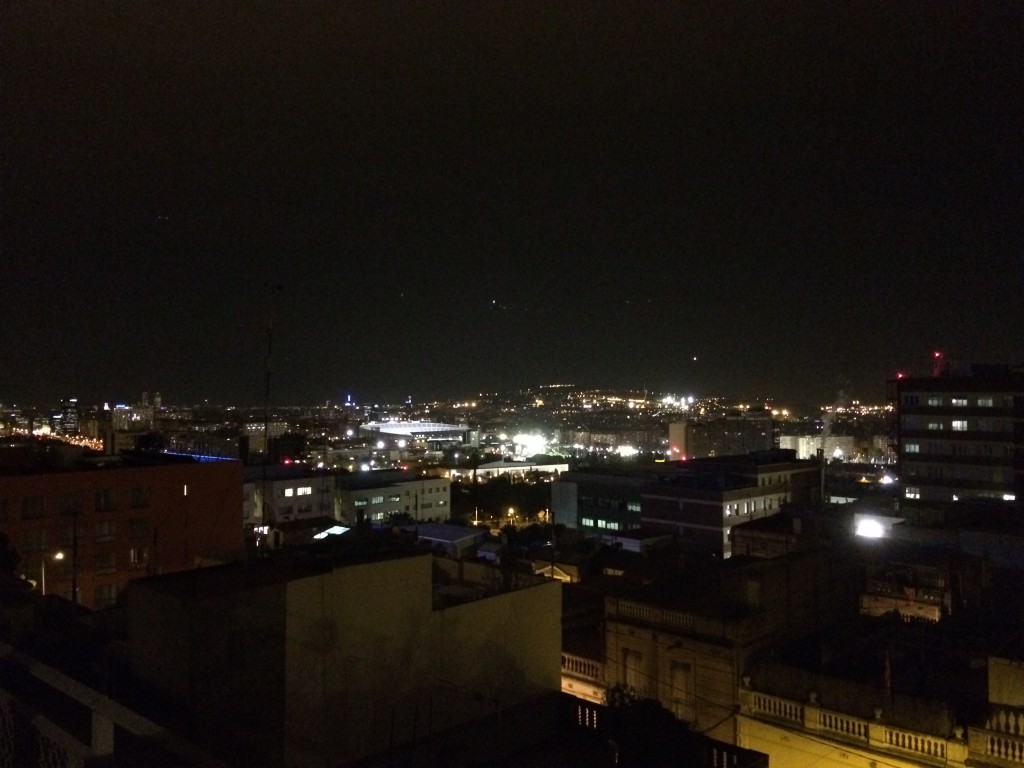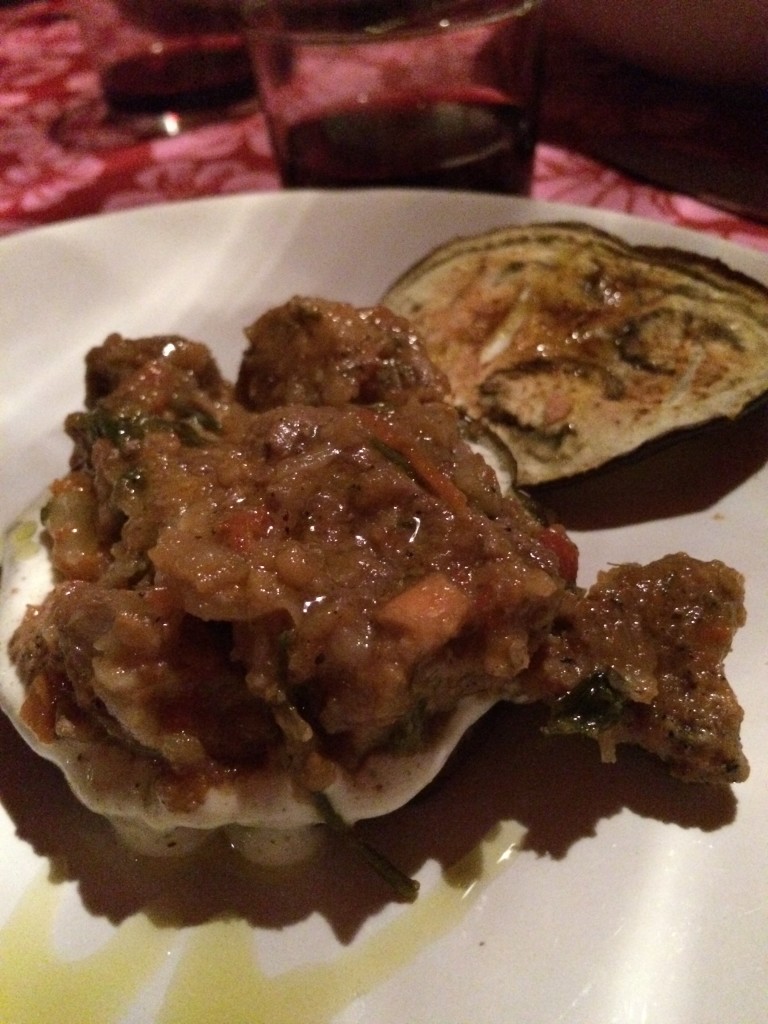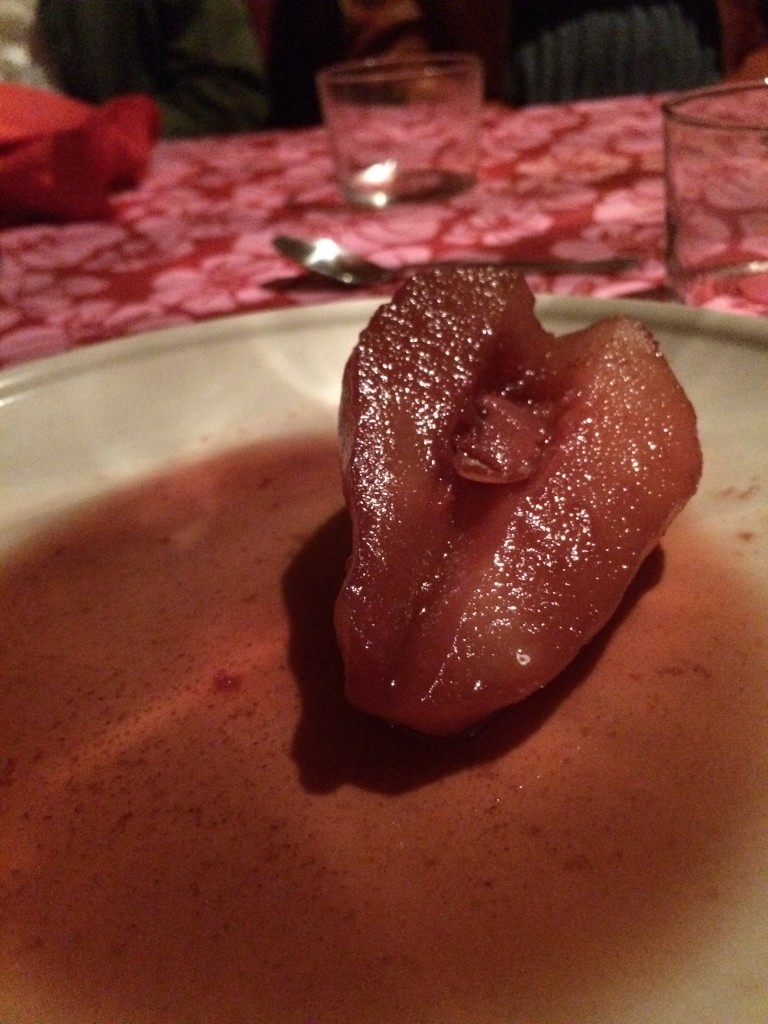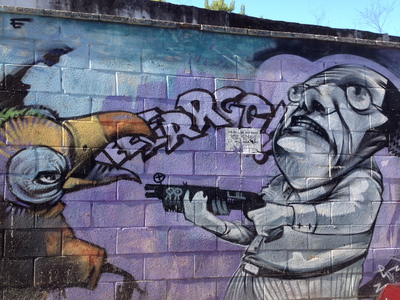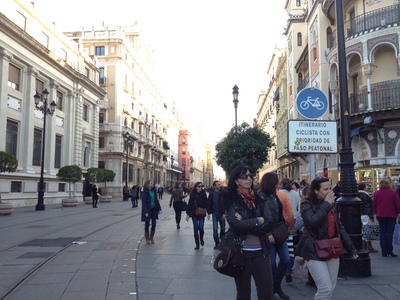
And now comes the fun stuff..or at least the start of it 😉
Now that we’ve started to get used to the city, walking around and navigating everywhere, we know how to be safe, have fun, and (sometimes) be well enough rested to make it through the next day doing the same. For the first couple of days, we could walk in circles around the same streets and have no idea that we were around the corner from the same place we’d visited just a day, or half hour prior. Now however, that we’ve gotten a feel for the areas we visit most, we can leave our part of town less than an hour before we have to be at a place that’s just a 20 minute walk away! When we make it to certain landmarks, and realize that we’re right next to a certain street, or other landmark, and without being totally turned around, it’s one of the most triumphant and reassuring feelings in the world!
Shopping – Rebajas!!
Knowing our way around doesn’t only help us to navigate to the places we have to be to meet up with our program group, but also makes taking advantage of the Spanish culture and conditions much more doable. During the first months of the year in Spain (and apparently some other places in Europe), there’s a huge, nationwide sale. Here, the word for sales is “rebajas.” And boy have we gotten used to seeing, hearing and saying it! Each day walking into the same and new stores to look at shoes, purses, pants, and all the other classy and chic European clothes you could imagine – it’s so much fun. I haven’t bought anything yet, but certainly plan to make a couple of additions to my wardrobe before this opportunity ends.
There’s a Crosswalk in the Kitchen!? But only a yellow light.
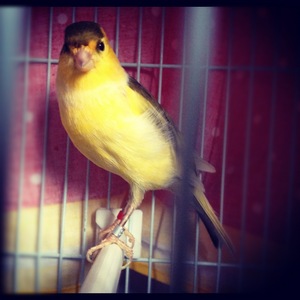
Right on the corner outside our apartment building, there are a number of crosswalks, which all chirp like finches when it’s ok to cross. For some reason, I was hearing this chirping randomly in the middle of the day, and figured it was just a crosswalk that I could hear through the window, which faces a pretty busy road. On Thursday morning, as I bent over to throw a napkin in the kitchen trash, I discovered that it wasn’t just coming from the nearby window, it was IN the room! ‘My host has a “p�jarro”??!’ I thought. She came in and removed the quilt cover on top of his cage she puts it there to keep him warm in the winter, and introduced me. I can’t remember his name now (faces and names aren’t a specialty of mine, even if the face is unique as that of a bird :^p haha), but he’s awfully cute! He’s a little yellow guy with white and black accents and flecks. He sings a LOT, which occasionally warrants a “�callate!” (shut up!) from Loli, especially while watching the tele, or when she’s on the phone. She told me that last year when the “tio” in the family died (I’m not sure if this was reference to her son, who she told me passed away, or someone else in the family), that he stopped singing altogether and hardly let out but a chirp for months. I found that pretty incredible, animals are so sensitive to their surroundings. I love the singing, it’s really beautiful, and just makes the musty little apartment feel a bit lighter and more lively 🙂
High School Spanish…
…has been a lot more useful than I first expected it to be! There are so many things here that I learned or heard about, particularly when I was in AP Spanish with Mrs. Levenson, at Allderdice. One of the first was the fact that most people have a heater under the table, and a large table cover that functions as a blanket to keep all the heat on your legs and feet. This used to be (and maybe in some cases, still is) a bucket of hot coals that kept the feet and legs of the people sitting there nice and toasty in the winter months when the tile floors are like having your feet and legs on ice, even if you wear your “zapatillas” (slippers). I also noticed that it’s a common practice for people to put their pointer finger to their face, as we do in America to signal crying, when they talk about looking at something, or paying attention. I thought of the old Spanish flamenco film, “Bodas de Sangre,” (Wedding of Blood) that we watched so many times, when we saw flamenco with our group on the second night of orientation. I knew from that movie how melodramatic and expressive the dance numbers were meant to be, and that they almost always tell a specific story. Stories which, if you don’t know from the words of the accompanying song, one can simply feel because of its incredible characteristic of emotional intensity.
Interest groups…what to do?!
We have the opportunity to choose an interest group to learn and travel with throughout the semester, but I haven’t chosen which one to do yet! Hannah, Randa and I went to an info session at the CIEE office about them, where people in charge of each had little tables set up and we could walk around to talk to them and get a flyer. Apparently the most popular are the IGs that learn about and go to Morocco, C�diz, or Mallorca at the end. There’s also a group that does sports and hiking, and goes to the Real Madrid f�tbol stadium, which was my original first choice, but now I’m not sure! We have to go early tomorrow morning to sign up for which ones we want. I think if I have the choice I’m going to pick the hiking and sports involvement group. I can’t think of any other way I’ll get to do that kind of outdoor activity, but there are plenty of opportunities to go to all of the other places they offered, and “probar las comidas” (try the different food) of Espa�a.
Class scheduling.
After the interest group info session on Thursday, we had to go up stairs to find out about our time for “matriculaci�n,” scheduling classes. Hannah and I were both scheduled for the same time and place – the next day, in the afternoon – while Randa would do hers Saturday in the morning. When we went to do it, we found out that we were placed in the Advanced Grammar group for our 2-week intensive Spanish class. Though not as good as the top 20%, which I’d hoped to score in, I was glad I’d be taking a general Spanish class instead of the Spanish History that they were, that sounded hard. I need to learn some “historia Espa�ola” though, politics and history are very pertinent and important to Spaniards and their culture. Anyways, Randa was in the next level down, which doesn’t make sense, because she and I communicate at relatively the same proficiency (if anything, she’s got better comprehension than me, actually). During my matriculaci�n, I scheduled a bunch of classes, at least one or two of which I will have to drop though, because I took on a pretty heavy load. Two art history courses (one with native Spanish speakers); a seminar in “Living and Learning in Sevilla,” which should be interesting, but also good for my r�sum� because I will get a certificate of “international competence,” or something to that effect, for free when it’s usually the result of a $300 class. I also signed up for a class called “Psychology of Learning a Second Language” (yaay!! :^D Right up my ally), and one on “Lexicology and Semantics of Spanish,” which I’m also really looking forward to. The last is a class Hannah, Randa and I are taking together. It’s on the “Three Cultures of Spain: Christians, Jews, and Muslims,” which is cool, because each of us comes from one of them 🙂
Our First Night Out.
When we came out of scheduling, there was a group of people from Discover Sevilla, a party and travel company that has events for Spanish and international students, standing around passing out cardss. We met and made some connections with the famed Toba, who posts all over FaceBook for all of their events, and has made himself well-known by thousands of students studying abroad here in Seville. He gave me a business card as well, so we can get in touch, and told us to come to their welcome party that night. We didn’t have any other plans, so we decided to check out the club, Abril (Spanish for April, like the month), which was on the other side of town. When we got there at midnight the place was literally empty with the exception of a bartender and two DJs. Uh oh, were we in the right place? We’d shown the guy at the door our promo cards and gotten stamped to come in and have free sangria until 2am, but where were all the other people with little green four-leaf clovers on their wrists?! Apparently no where to be found…until 2am. We watched as groups of other abroad students (none from CIEE though) started to pour in after 12:30. The music was mostly pop from the States, mixed by the DJs for a unique, more danceable sound, but picked up later in the night. By 2am, the place was filled with hundreds of Spaniards, students, and party promoters. We found Toba, who got us cards for free “chupitas” (shots, or mixed drinks, which are served unmixed much of the time, with a bottle of mixer and a half-full glass of hard liquor on the rocks), and got to dancing! It was a great time, just the three of us dancing our hearts out, and of course, watching other people do the same. Most European men stay in a group, and keep to themselves unless a female seems particularly interested in talking or dancing. I appreciated this a lot, as men in the States usually act much less refined in the clubs. I needn’t explain how so – just take a look at a club scene in any popular recent music video – they’re less than considerate of personal space, and to me it’s just a little disturbing. We stayed out until about 3:30am, at which point we figured we should get home if we wanted to get any kind of rest before our trip to Alcazar (palace) at 9:55 the next morning. Well you should just know that we each hit snooze and decided it might be best if left for another time because at that point, sleep was more important…Randa had to schedule her classes that morning though, so we met to go do that and then get both her and Hannah cell phones.

People are desperate.
Yesterday when we were walking on the street after scheduling Randa’s classes, we ran into Brogan, someone I’d met on our last night in the hotel. He was headed home with plans to go for a run with some guys from the residencia, which he’s living in, after matriculaci�n. He hadn’t heard from them, so he decided to come with us for lunch in the plaza by the CIEE study center. While we were seated, talking about life and our personal interests, we saw a number of people walk by panhandling, and playing music for money from instruments I’d never even seen before. These were mostly gypsies. One woman walked around dressed as a clown with balloon animals half-twisted into long strips with poofs and petals, ready to be transformed into dogs and flowers. As the sun hid behind a beautiful old building at my back, we each wondered aloud what it must be like to sit on a corner in a blanket, play an accordian, or dress up as a clown, while life went on around you. I gratefully swallowed delicious chunks of avocado, greek cheese and olives, and tomato; washed down by “tinto de verano” (wine of summer, red with lemonade). After our meal, Brogan separated from us to go for his run, and we went shopping. On our way home, we saw more street ‘actors and artists,’ if you will. They were doing all sorts of crazy stuff. One had his face made-up like a baby and stuck through a hole in a stroller that had a baby doll body made to look like his own. He blew loud smacking kisses and made ridiculous noises as if someone were pulling a string in his back and letting it go, or pressing a sound effects button. Another, on our side of the street, had his head stuck through a table, as if on a plate, with two fake heads to each side, and yelled, “BOO!” when we walked by, which made the three of us practically jump out of our shoes. Then there was the man “knee-deep” in a tiny flower pot, dressed up as a plant, and others playing music and selling chachkees the whole way down the main road in town. We hadn’t expected that, but were much less surprised by the end of the day than the first we’d seen, who danced around the square with a stuffed man and woman strapped to him like a backpack, “dancing” to old Spanish music. It was a quite a sight. And an eye-opening one, at that.
 Out on the Town.
Out on the Town.
Last night, we watched our first f�tbol game here in Sevilla! The two big teams of Seville, FC Sevilla, and Real Betis played each other. It was exciting because, as told by Hannah, Betis has been an underdog for a while, and just recently made it high up enough in the ranks to play in the same league as Sevilla. They went into overtime and tied 1-1, which Loli said tonight was a good thing, because it’s a pretty big deal here and “better if everyone’s pleased”. There were hundreds of people packed in the bar that we went to, and cheers and shouts came when either team got ahead or lost the ball, so it was pretty exciting. There weren’t many seats in the bar, even after it cleared out, so we left for a hookah bar that we’d gotten a card for earlier in the night. When we got there, we had a group of almost ten people, but just Hannah, Randa and I ended up staying to chat with the owners and smoke for free as long as we had drinks, which was the promotion of the night. We ended up staying for a while, striking up conversations with regulars who were there with a group of friends; and the owner, who came from Belgium seven years ago, and has lived in Sevilla since. When we realized we couldn’t pay with plastic, we had our new friends take us down the street to show us where to “cajero” (cash machine) was. As we walked down the street, I saw the silhouette of someone pulling something long, skinny, and curved out of the trunk of a car. I was HORRIFIED at the thought that someone might be pulling a rifle out in a semi-public place, and tripped over the sidewalk as I crossed onto the other side of the street. I finally realized that it was a guitar, and laughed at my instinctual fear of the worst. Here in Andalucia, guitars over guns is usually the right selection of “G” words, even at 3:00am in a dark side-street. After we finally got back to the hookah joint and paid, we decided to let two of the guys we’d been talking to take us to a club. One of them, Edu, had come on his bike and offered to take one of us there on it. We decided it was probably better if we didn’t split up…but that doesn’t mean one of us may or may not have taken him up on that offer and gone on a really cool 5 minute ride along the river (wearing a helmet!) and met them there safe and sound :^D …ANYways, Hannah was tired, and my feet were a little sore from the heels I’d been wearing all night, so we only stayed a little while, but it sure was the definition of a fun and spontaneous night in Spain. Home at 4:00am was earlier than a lot of locals were calling it a night, but it felt so good to get into my warm bed, and stay there until noon today!

��No Soy Espa�ola!!
After waking from my cozy slumber, Randa and I went to go meet Hannah at a caf� on the other side of the river and have some coffee. There was a man there who struck up a conversation with the three of us when he heard us trying to decide what to drink. Apparently, he spent a lot of time in the States at a couple of different points in time, and so, spoke pretty fluent English. He said I speak Castillano with a really accurate accent, and that would be why people (including my host mom, probably) assume I’m Spanish or forget that I’m not, and then speak to me so quickly! He knew I was American but would break into thick and almost incomprehensible speech every now and then when he was addressing me. He also told us some classic differences between US and Spanish gestures, like the one I mentioned earlier. Running a pointer finger, or the edge of one’s hand across the neck is indicative of a threat, and never has the less aggressive meaning of “finished,” or “no need,” like we can use it at home. This whole hour-long conversation took place in both English and Spanish, and incorporated a fair amount of code-switching, which was fun and interesting, because that’s a large part of what I studied this year at Penn State.
Living, Learning, One Day at a Time.
Sometimes it’s been a little tough, but one of the things that I’m starting to notice is the availability of words I didn’t realize I still had in my Spanish vocabulary. It’s a little mentally taxing; and therefore, somewhat emotionally exhausting at times, because of the self doubt that comes with trying to express myself at the level of intellect that I can in English. However, the more I carry long conversations with people – like at dinner with my host mom, and Spaniards I meet – and stick it out, it gets easier. I noticed that last night (not ironically, only after a pretty large gin with strawberry and lemon juice), I found myself speaking more or less fluidly, stopping to search for words less often than I did earlier in the week. At this point, the matter of confidence has dissipated for the most part, and overcoming . The urge to circumlocute (lit., “talk around a word,” as when you describe something instead of talking about it directly) when I can’t find a word is less prevalent than I expected it to be. Maybe because that’s even less efficient than waiting a few moments until the right vocabulary rises to the surface. It’s also been helpful to make myself mental scripts of situations, or long explanations that I need to communicate.
No, they don’t censor boobs in Europe.
I’ve also come to notice very much the open and direct approach to life and interaction that people have here. To them it’s as though people in the States have a constant filter between their brain and their face, and prevents any “Freudian slips,” as we, not they, would refer to them. The word “mierda,” almost doesn’t even seem to have a direct translation to the English four-letter S word, as is taught in los EEUU (Estados Unidos – pluralized as such so as not to be confused with the EU). It has a different connotation altogether, and can take on either the property of profanity or simple exclamation, depending on how it’s said and used. It’s really easy to catch on when everyone around is this way, and taboos of all kinds are regarded as less serious. It’s normal to express oneself in an honest, but still appropriate, manner. And as the heading of this section suggests, boobs and butts are free game on Spanish television, ads, and publications!
Tomorrow I have to get up early to sign up for my interest group…let’s hope I can be there before everyone else and actually get a spot in something interesting!!
Location: Triana. Sevilla, Spain.


